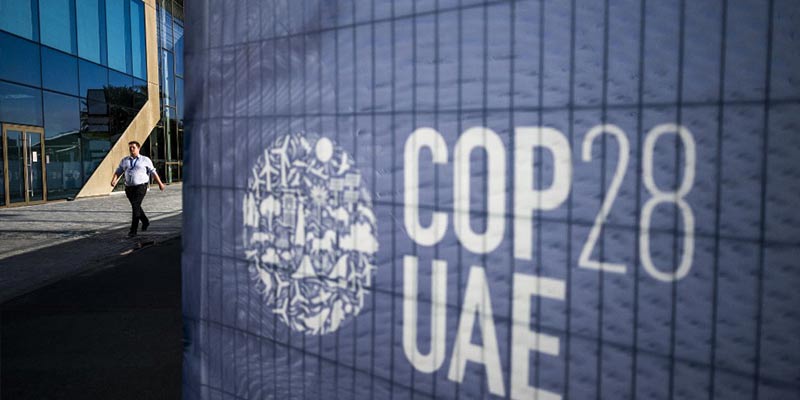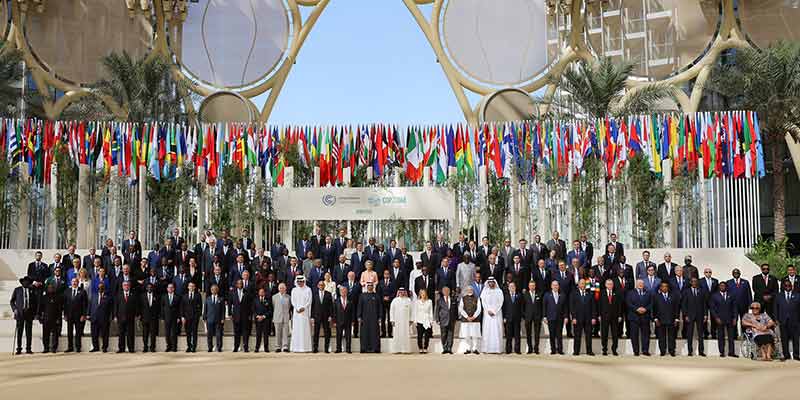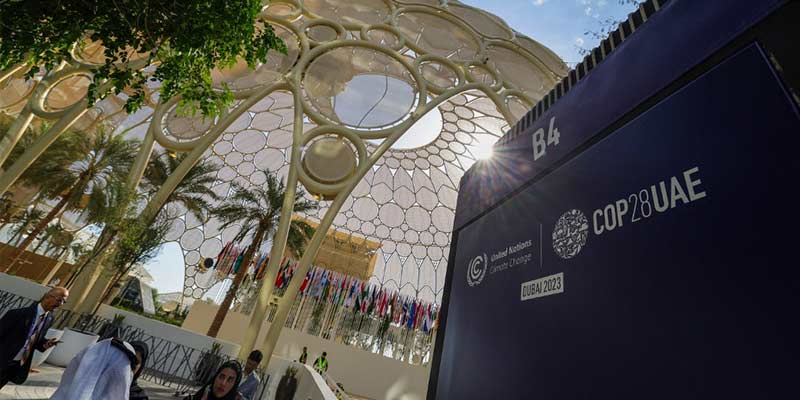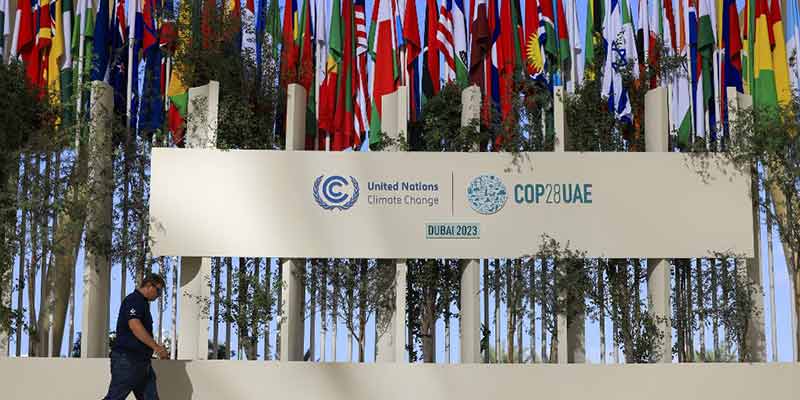- World
- Dec 01
Explainer - COP28 and Global Stocktake
• World leaders, business luminaries and civil society members have reached Dubai for the opening of the United Nations’ annual Climate Change Conference — COP28.
• The COP28 is taking place from November 30 to December 12 under the presidency of the UAE.
• The two-week-long summit will look to address some of the most-pressing issues related to what experts say is a rapidly accelerating climate crisis.
• The Dubai COP will mark the culmination of a process known as the ‘Global Stocktake’.
• COP28 comes after a year of devastating extreme weather events, brought on by climate change. This year is on track to be the warmest ever, while wildfires, floods and heatwaves hammered countries from the United States to China.
What is climate change?
• Climate change is a long-term shift in weather conditions identified by changes in temperature, precipitation, winds, and other indicators. Climate change can involve both changes in average conditions and changes in variability, including, for example, extreme events.
• The Earth’s climate is naturally variable on all time scales. However, its long-term state and average temperature are regulated by the balance between incoming and outgoing energy, which determines the Earth’s energy balance.
• Any factor that causes a sustained change to the amount of incoming energy or the amount of outgoing energy can lead to climate change.
• Different factors operate on different time scales, and not all of those factors that have been responsible for changes in Earth’s climate in the distant past are relevant to contemporary climate change.
• Factors that cause climate change can be divided into two categories — those related to natural processes and those related to human activity.
• Around the world, storms, floods and wildfires are intensifying. Air pollution sadly affects the health of tens of millions of people and unpredictable weather causes untold damage to homes and livelihoods too.
What is COP?
• The United Nations Framework Convention on Climate Change (UNFCCC) is a multilateral treaty adopted in 1992, shortly after the first assessment report by the Intergovernmental Panel on Climate Change (IPCC) in 1990, to stabilise greenhouse gas concentrations at a level that would prevent dangerous anthropogenic (human-induced) interference with the climate system.
• Since entering into force in 1994, the UNFCCC has provided the basis for international climate negotiations, including landmark agreements such as the Kyoto Protocol (1997) and the Paris Agreement (2015).
• The Conference of the Parties (COP) is the main decision-making body of the UNFCCC.
• It brings together the 198 Parties (197 nations plus the European Union) that have signed on to the Framework Convention.
• The inaugural COP gathering took place in Berlin, Germany, in March 1995, and today the COP secretariat is headquartered in Bonn.
• COPs serve as the formal meeting place each year for the Parties to negotiate and agree on how to tackle climate change, reduce emissions and limit global warming. A primary task at COPs is the examination of national reports and emission inventories submitted by participating countries.
• These reports offer essential insights into each country’s actions and their progress toward achieving the overarching goals of the Convention.
• COPs are hosted annually in different countries, under the auspices of the UNFCCC, with the UAE hosting COP28.
• COP27 was held in Egypt’s Sharm el-Sheikh in November 2022.
• The COP presidency rotates among the five recognised UN regions — Africa, Asia, Latin America and the Caribbean, Central and Eastern Europe and Western Europe and others. This rotation ensures that different corners of the world have the opportunity to host and showcase their commitment to addressing climate challenges.
What is the Paris Agreement?
• The Paris Agreement is a legally binding international treaty on climate change. It was adopted by 196 Parties at the UN Climate Change Conference (COP21) in Paris on December 12, 2015. It entered into force on November 4, 2016.
• It mobilised global collective action to pursue efforts to limit the global temperature increase to 1.5°C above pre-industrial levels by 2100, and to act to adapt to the already existing effects of climate change.
• The agreement asks countries to review commitments every five years, provide financing to developing countries to mitigate climate change, strengthen resilience and enhance abilities to adapt to climate impacts.
What is Global Stocktake?
• A key moment at COP28 will be the conclusion of the first Global Stocktake, a process that will see the world gauge what progress has been made towards meeting the goals of the Paris Agreement – and where countries are falling short.
• It is outlined in Article 14 of the Paris Agreement.
• Governments will take a decision on the global stocktake at COP28, which can be leveraged to accelerate ambition in their next round of climate action.
• The global stocktake is like taking inventory. It means looking at everything related to where the world stands on climate action and support, identifying the gaps, and working together to chart a better course forward to accelerate climate action.
• The stocktake takes place every five years, with the first-ever stocktake set to conclude at COP28.
• By evaluating where the world stands when it comes to meeting the goals of the Paris Agreement and using its inputs, the stocktake can help policymakers and stakeholders strengthen their climate policies and commitments in their next round of nationally determined contributions (NDCs), paving the way for accelerated action.
• The decision adopted by the parties at COP28 could emerge as the most consequential outcome following the 2015 Paris conference.
Why does limiting temperature rise to 1.5°C matter?
• At 2°C of global warming, there would be widespread and severe impacts on people and nature. A third of the world’s population would be regularly exposed to severe heat, leading to health problems and more heat-related deaths.
• Almost all warm water coral reefs would be destroyed, and the Arctic sea ice would melt entirely at least one summer per decade, with devastating impacts on the wildlife and communities they support.
• We cannot rule out the possibility that irreversible loss of ice sheets in Greenland and the Antarctic could be triggered, leading to several metres of sea level rise over centuries to come.
• At 1.5°C, the impacts would be serious, but less severe. There would be lower risks of food and water shortages, lower risks to economic growth and fewer species at risk of extinction.
• Threats to human health from air pollution, disease, malnutrition and exposure to extreme heat would also be lower.
• That is why every fraction of a degree of warming matters, and why countries are dedicated to keeping the prospect of holding temperature rises to 1.5°C alive.
Manorama Yearbook app is now available on Google Play Store and iOS App Store




